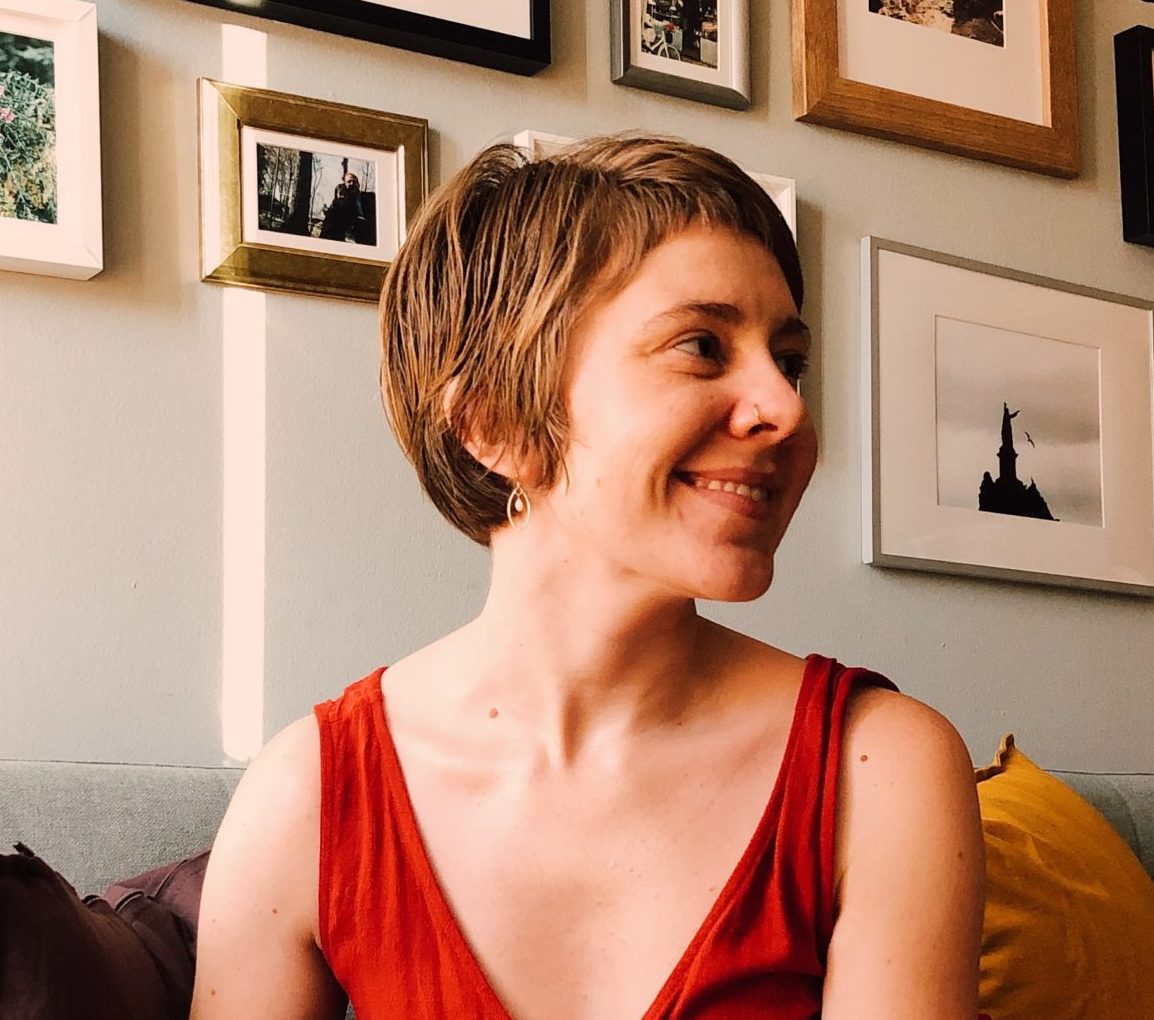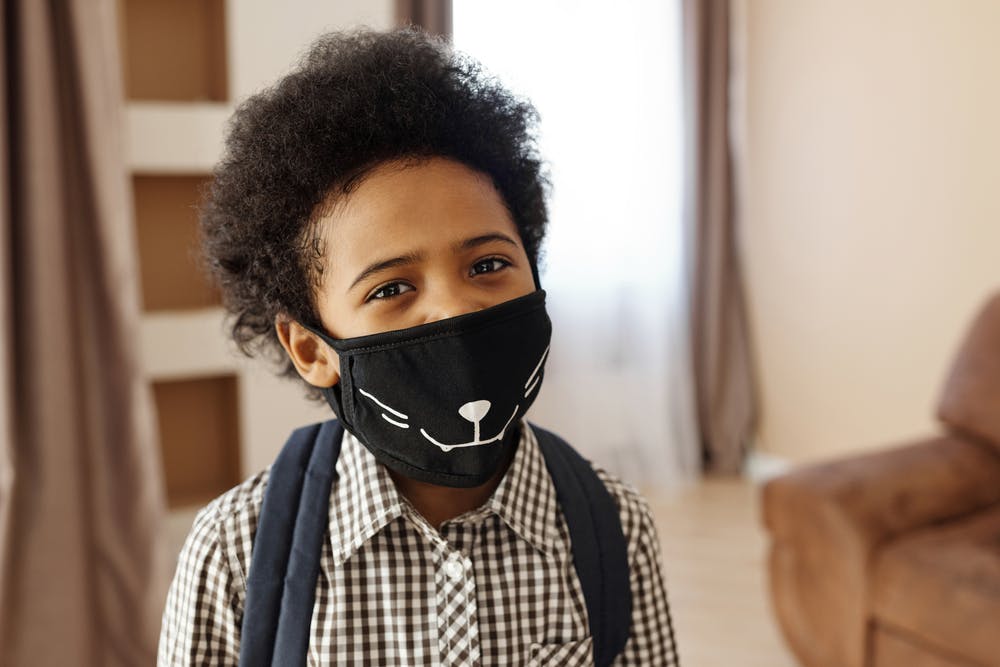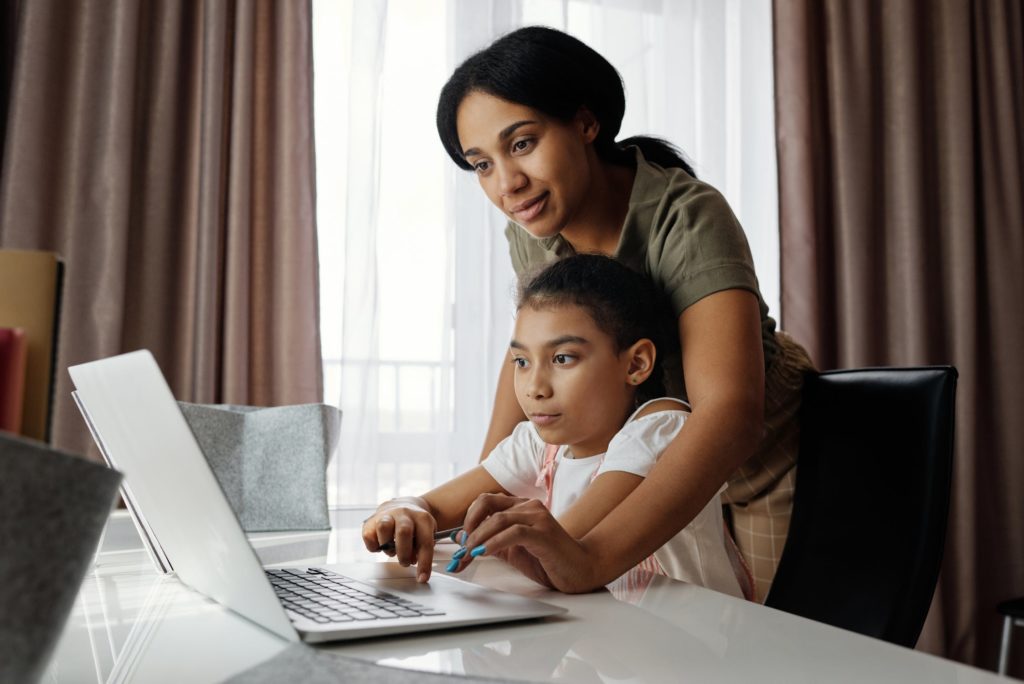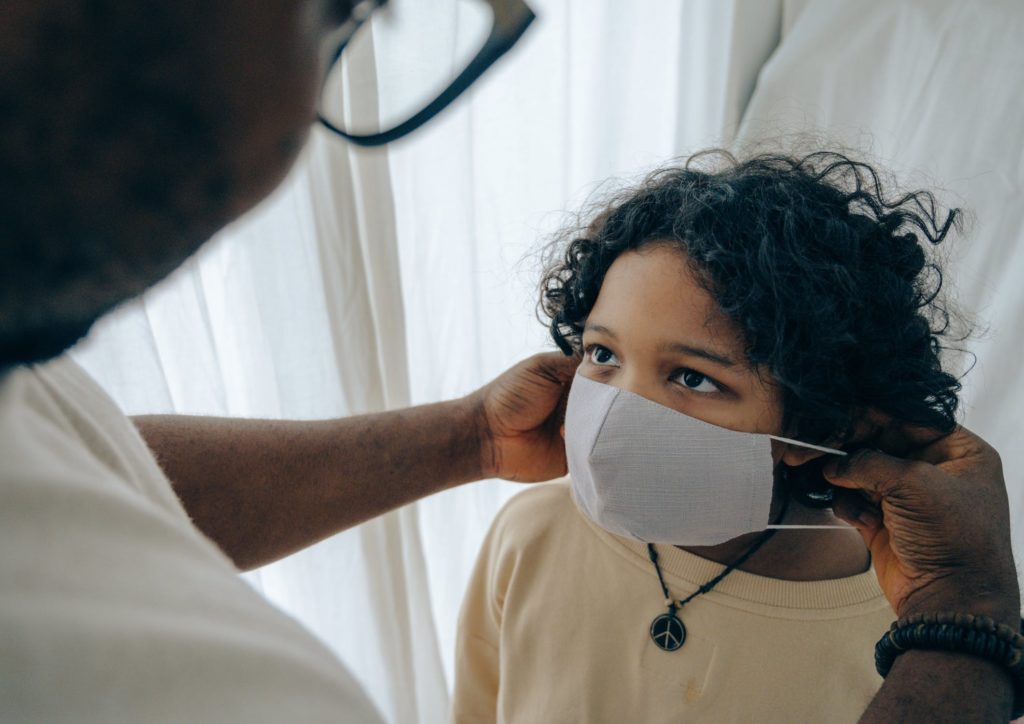This is the first blog post of many we’re working on about back-to-school in the COVID-19 era. On staff at The Prepared, we have former and current educators, homeschooling parents, and future homeschoolers.
It’s summer! And we’re all tucked away inside (most of us on this website, at least). Whomp, whomp. Now, as SARS-CoV-2 cases rise again, parents who’ve been home with their children since the month of April are trying to figure out what to do. Will it be safe enough for them to go back to school? Will schools even open?
We talked to doctors, psychologists, and educators to find out how parents should prepare for what’s to come this fall. Here’s what you need to know:
- The experts are still not sure what the risks are for children contracting COVID-19 and bringing it home from school.
- It’s still too early to know what schools will do in the fall, but parents can make choices for themselves and prepare their children for all outcomes. We’ll know more as we get closer to autumn.
- Many schools will probably turn to a blended learning model, but that could vary depending on the school district.
- Parents and children should work together on their anxiety about uncertainty, and recognize that that anxiety is very real.
- If sending children to school, parents should take action to minimize risks.
Let’s talk virus—what are the risks when it comes to school?
There are many questions at stake for parents of school-aged children in the coronavirus age. (Will I have to work? What will I do for childcare if schools are closed? Will my child ever get to socialize again?)
But the route most prepared parents want to take when deciding whether or not to send their children to school in the fall goes something like this: tell me what the health risks are for my child, my family, and my community, and we’ll make the most rational choice. The problem is, when it comes to COVID-19, the risks for children and their families are still somewhat unclear.
A study published in Nature in June concluded that people under the age of 20 could be half as likely to contract COVID-19 as people over the age of 20. So that bodes well for transmission and infection rates in children. That same study found that clinical symptoms of COVID-19 showed up in just 21% of infections in 10- to 19-year-olds. (For contrast, 69% of infected people over the age of 70 showed symptoms.)
But other studies have pointed out very severe illness in children who’ve contracted COVID-19. And that’s to say nothing of the risks for parents and teachers if children go back to school.
It’s frustrating, but we still don’t have conclusive information about how COVID-19 behaves in children. From the CDC’s website:
Information about COVID-19 in children is somewhat limited, but the information that is available suggests that children with confirmed COVID-19 generally had mild symptoms. Person-to-person spread from or to children, as among adults, is thought to occur mainly via respiratory droplets produced when an infected person coughs, sneezes, or talks. Recent studies indicate that people who are infected but do not have symptoms likely also play a role in the spread of COVID-19.
However, a small percentage of children have been reported to have more severe illness.
So it’s virtually impossible to be certain the choices parents and schools are making right now are the ‘right ones.’ And plans might change as the body of COVID-19 research grows. That’s not the most thrilling answer, but it’s the truest one.
In the absence of information about health and safety, we have to make predictions and choices for the fall in other ways. Enter: blended learning.
Blended learning: the most probable outcome
Many children who were in schools last year will be offered a ‘blended learning’ option when the fall semester rolls around. Jenn Breisacher, the CEO of Student Centered World, has been working with teachers around the world to transition their COVID-era teaching from the in-person classroom to a blended model. Breisacher says the hardest thing for parents and teachers right now is that it’s unclear exactly what’s going to happen in the fall. Based on her work, though, Breisacher has a guess.
“A blended or hybrid model (in class and out of class) seems to be the safest, with applicable social distancing and other such measures while in the classroom,” Breisacher said.
The blended model could involve half-weeks or half-days of in-person school paired with distance learning so schools can keep class numbers down and implement thorough cleaning.
The idea is this: In the blended model, students watch videos, ask and answer questions, and do a lot of the ‘first time learning’ at home. When they go to school, they do the practice work and collaborative activities.
“A lot of people, when they hear blended learning, they think it’s just expanded homework,” Breisacher said.
They imagine their kids will return to school and come home with hours of projects and activities they’ll have to help with. That’s because in a traditional classroom, students learn about new concepts for the first time in school. Then, they take homework home and practice those concepts. That’s where the questions, anger, and frustration come up.
But in blended learning, that model is flipped around. Since students practice concepts in the classroom instead of at home, their questions and frustrations come up when teachers are there to help them.
That’s what Breisacher thinks most schools will try to do, but she says parents should reach out to their individual schools to find out about their plan. “If they’re not all fully trained on what blended learning is, it could look drastically different,” Breisacher said. “It’s really important to know what the school district’s plan is and how it could change.” If parents aren’t comfortable with the plan, they’ll need to prepare for other options.
How to decide what to do for your children
Every psychologist, doctor, and educator I interviewed for this post said that when considering how to prepare for the coming school year, parents need to make the best choices for their families. Great! We’re on board! But what are the options?
If you’re already a homeschooling family, you’ll most likely keep homeschooling. But even homeschooling programs have changed since the pandemic began, and both parents and children have to adapt. Field trips are no longer an option, and specialists aren’t available in-person. Some families that used online exploration programs like Outschool are now relying on those courses even more to add new dimensions to their curriculum and replace field trips.
If you send your children to school (that was 96.7% of American children in 2016), you have a few choices:
- Follow the traditional school’s plan. Maybe this is blended learning, maybe the school will do in-person classes for a while and then go online. Maybe the whole year will be online.
- Pull your children out of school, now or later. You’ll have to choose a homeschooling curriculum.
Okay, now how should a family go about deciding what to do?
Consider the larger context
The bottom line: in an ideal world, the classroom is a good place for children to learn. “In most cases, children will get a better education if they attend in the classroom,” said Leann Poston M.D., M.B.A., M.Ed. Dr. Poston is a pediatrician who also taught high school for twelve years.
But we are not in an ideal world. So parents need to look at the risks for their family and their children and make the best choice they can. First, experts say that parents need to take a hard look at their surroundings and their own situation. Ask questions like:
- If my school district goes online, will my child have reliable internet access? How about their peers?
- How did the transition go this spring when the pandemic began? What kind of communication am I getting from the school?
- Will I have the resources to purchase, learn, plan, and teach a homeschooling curriculum?
- How will my child do in school if they have to wear a mask? What do COVID cases look like in the area? Are people following the recommendations of health officials?
Understand that online learning probably won’t be as good as learning in the classroom. Breisacher’s blended model could work, but it might be applied differently in different school districts. “There are some school districts where kids don’t have internet access at home,” said Breisacher. “There are ones where they can go totally online without missing a beat.”
In many areas of the country, internet access is extremely limited. Some research suggests that as many as 157.3 million Americans are without broadband-speed internet.
And even if internet access isn’t a problem, the transition to blended or online learning requires a lot of resources. “Most schools are not set-up for online courses,” Dr. Poston said. “Teachers have not been given the time and preparation to prepare an interactive, engaging online class that will meet five days a week and schools do not have the financial backing to support this option.”
Parents can also consider the risks of online schooling. According to Dr. Poston, those are: “disengaged students who do not finish their education, a greater risk of child neglect, abuse, and exploitation, an overall higher level of stress in the family, and health risks from staying inside all day.” Now, online schooling may be the only option in the next school year. But it’s important to be aware of those risks so you can watch out for them in your children and community.
Consider age and your child’s needs
Parents of first graders have had vastly different experiences moving to distance learning than parents of high-schoolers. That’s because children of different ages are in developmentally different places.
“Having to do virtual schooling has been difficult for younger children,” said Dr. Bita Nasseri, a doctor and mother of three. “Their learning experience is based on feel and touch and social, interactive experiences, so it is a challenge.”
Meanwhile, teens have faced different challenges when moving online. “I’m seeing teens using COVID as a reasoning to pause on their development because society is saying this is acceptable,” said Michael Kawula, a parent of three teens and co-founder of Help A Teen. Kawula said parents should focus on empowering their teens to figure out the right next step for them. They should learn that “in life when plan A fails, we move to plan B, C and so on.”
Perhaps teens can help develop their own homeschool curriculum, but maybe young children will go back to school on a blended model. Either way, “for children and teens, parents need to make adjustments to make education just as fun and as interactive as a virtual world allows,” Dr. Nasseri said. Parents should “create more virtual, socially warm, and interactive gatherings connecting kids to their peers.”
For parents whose children have special needs, it could be worth finding a school that will at least start with in-person classes so they can have access to services they need.
Prepare by addressing everyone’s anxiety
It’s normal to be anxious about what will happen in the fall. And that’s true for both parents and children. Before dealing with safety gear and curriculum, the experts I spoke with said that managing anxiety is important to everyone’s success this summer and fall.
“One of the things I think all parents need is to tune in to their own feelings first,” said Dr. Lisa Pion-Berlin, the director and CEO of Parents Anonymous. “This is a very hard time. This pandemic is like nothing we’ve experienced in our lifetime, and we need to take care of ourselves first before we can nurture our children of all ages.”
It can be true that we have totally abandoned working parents during the pandemic, and that reopening schools puts teachers and staff in impossible situations, and that childcare has been a national crisis since way before March. This can all be true.
— Katie Adams (@KatieHAdams) July 3, 2020
“Basically, people have to make choices for themselves to make things work for their life, values, and family in the long haul,” said Dr. Pion-Berlin. “Some of these choices are very scary. When you acknowledge your own deep feelings, that provides you the opportunity to work through it. The fear doesn’t go away, but you can manage these feelings to provide a loving home for your children and youth.”
Parents will have to catch their breath, because ultimately, it is up to them to guide their children through uncertainty about the fall, said Karen Gross, trauma expert and author of Trauma Doesn’t Stop at the School Door. Many people feel out of control right now.
“It was bad before the pandemic, but then the pandemic came, then racial tensions, then unemployment, then more pandemic,” said Gross. “Feeling out of control is a really bad feeling for most people.”
This pandemic has been a big, traumatic experience for all of us, and we’ll find the signs of that trauma in what Gross calls the ‘Five Ss:’
- Structure
- Stability
- Safety
- Subtlety
- Someone or someones
Trauma typically takes away our Five Ss. And the pandemic sure has for most of us–the structure of school or work, financial stability, physical safety, nuance, and closeness with the people we love.
“One of the goals for parents and educators is to restore the five Ss that trauma takes away,” said Gross. “We can’t get rid of trauma. Once you have trauma it doesn’t go away, but there are a lot of ways for managing it.”
Gross said there are eight main things parents can do to help their children (and themselves) with restoring the Five Ss so we can make safe choices about school:
- Stay calm and stable.
- Be honest but not anxious.
- Indicate capacity to deal well with whatever happens in terms of reopening.
- Express how difficult uncertainty feels.
- Allow children, without judgment, to express feelings — orally, through writing, drawing, or music. Even “negative” emotions should be voiced. Unless you name it, you cannot tame it.
- Role model behavior that is positive and reveals hope.
- Be authentic; kids detect frauds.
- Listen, listen, listen. Allow children to speak and be heard.
As they guide their children, parents will also need to help themselves. “Parents need to get in touch with any type of fear or angst they have about this situation,” said Dr. Pion-Berlin. “This is going to go on for quite a while.”
Note: If a child is worried about getting sick, the CDC recommends using the National Association of School Psychologists’ guide to talking with children about the virus.
What parents can do to minimize risks at school
If parents and children ultimately decide to go to in-person school either blended or full time in the fall, they’ll have to mitigate risks. “For every question I have been asked about COVID, my answer has always been that there is no ‘no risk’ activity,” Dr. Poston said. “You must weigh the risks and benefits and see if there are any ways to decrease risk without decreasing benefits.”
If your school district opts to return to in-person classes every day or part time, Dr. Poston recommends looking for the following elements in their policies:
- Schools should encourage–and definitely not penalize–students staying home if they’re feeling sick in any way.
- Make sure hand sanitizer is widely available, and look for staggered lunch times and ample time for bathroom breaks
- When in close contact, all children should wear masks. But Poston said it’s also good to make sure kids get a break from wearing masks (i.e. half the class goes outside for 15 minutes at a time)
- Schools should maximize the ventilation in the classroom.
- Children should be kept together in the same small groups throughout the day to minimize contact.
- All children should be encouraged to change clothes and wash their faces, hands, and the outer surface of their backpack and lunch box when they get home.
Parents will need to make sure their children have quality masks or face shields to wear to school, ample hand sanitizer hooked to their backpacks, and wipes for shared spaces and desks.




You are reporting the comment """ by on